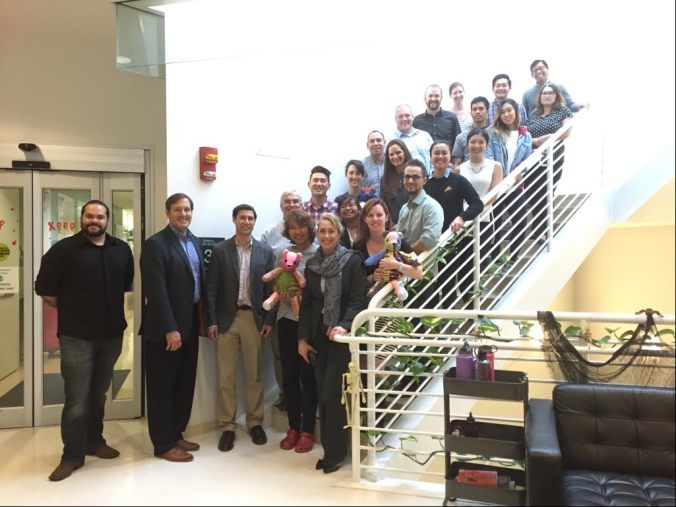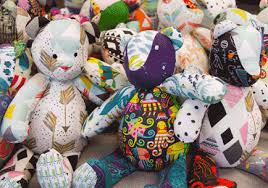There’s nothing like a face-to-face meeting to really get to know someone. And when the life of someone you love is in the hands of that person, then it’s a meeting that comes packed with emotion and importance.

Lilly Grossman
Last week Gay and Steve Grossman got to meet the people who are working with their daughter Lilly’s stem cells. Lilly was born with a rare, debilitating condition called ADCY5-related dyskinesia. It’s an abnormal involuntary movement disorder caused by a genetic mutation that results in muscle weakness and severe pain. Because it is so rare, little research has been done on developing a deeper understanding of it, and even less on developing treatments.

The Grossmans and Chris Waters meet the Buck team
That’s about to change. CIRM’s Induced Pluripotent Stem Cell iPSC Bank – at the Buck Institute for Research on Aging – is now home to some of Lilly’s cells, and these are being turned into iPS cells for researchers to study the disease, and to hopefully develop and test new drugs or other therapies.
Gay said that meeting the people who are turning Lilly’s tissue sample into a research tool was wonderful:
“I think meeting the people who are doing the actual work at the lab is so imperative, and so important. I want them to see where their work is going and how they are not only affecting our lives and our daughter’s life but also the lives of the other kids who are affected by this rare disease and all rare diseases.”
Joining them for the trip to the Buck was Chris Waters, the driving force behind getting the Bank to accept new cell lines. Chris runs Rare Science a non-profit organization that focuses on children with rare diseases by partnering with patient family communities and foundations.

Steve and Gay Grossman and Chris Waters
In a news release, Chris says there are currently 7,000 identified rare diseases and 50 percent of those affect children; tragically 30 percent of those children die before their 5th birthday:
“The biggest gap in drug development is that we are not addressing the specific needs of children, especially those with rare diseases. We need to focus on kids. They are our future. If it takes 14 years and $2 billion to get FDA approval for a new drug, how is that going to address the urgent need for a solution for the millions of children across the world with a rare disease? That’s why we created Rare Science. How do we help kids right now, how do we help the families? How do we make change?”
Jonathan Thomas, the Chair of the CIRM Board, said one way to help these families and drive change is by adding samples of stem cells from rare diseases like ADCY5 to the iPSC Bank:
“Just knowing the gene that causes a particular problem is only the beginning. By having the iPSCs of individuals, we can start to investigate the diseases of these kids in the labs. Deciphering the biology of why there are similarities and dissimilarities between these children could the open the door for life changing therapies.”
When CIRM launched the iPSC Initiative – working with CDI, Coriell, the Buck Institute and researchers around California – the goal was to build the largest iPSC Bank in the world. Adding new lines, such as the cells from people with ADCY5, means the collection will be even more diverse than originally planned.
Chris hopes this action will serve as a model for other rare diseases, creating stem cell lines from them to help close the gap between discovery research and clinical impact. And she says seeing the people who are turning her idea into reality is just amazing:
“Oh my gosh. It’s just great to be here, to see all these people who are making this happen, they’re great. And I think they benefit too, by being able to put a human face on the diseases they are working on. I think you learn so much by meeting the patients and their families because they are the ones who are living with this every day. And by understanding it through their eyes, you can improve your research exponentially. It just makes so much more sense.”

RARE Bears for RARE Science
To help raise funds for this work Rare Science is holding a special auction, starting tomorrow, of RARE Bears. These are bears that have been hand made by, and this is a real thing, “celebrity quilters”, so you know the quality is going to be amazing. All proceeds from the auction go to help RARE Science accelerate the search for treatments for the 200 million kids around the world who are undiagnosed or who have a rare disease.
Pingback: Meeting the scientists who are turning their daughter’s cells into a research tool